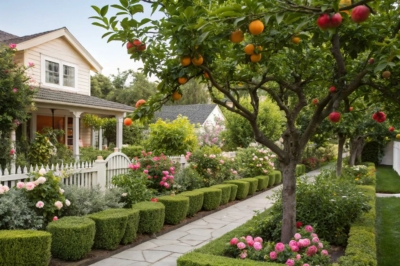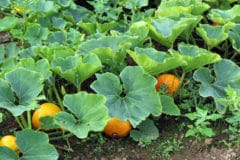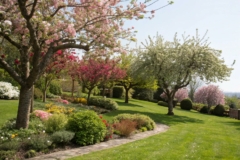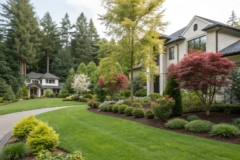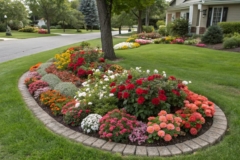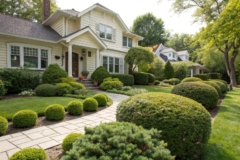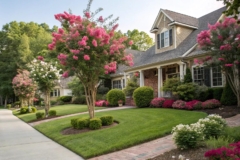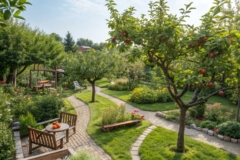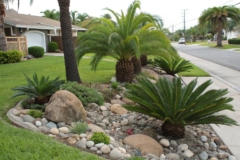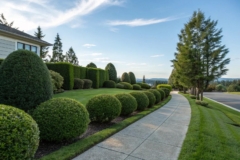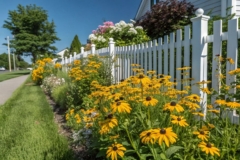1. Multi-Grafted Fruit Trees
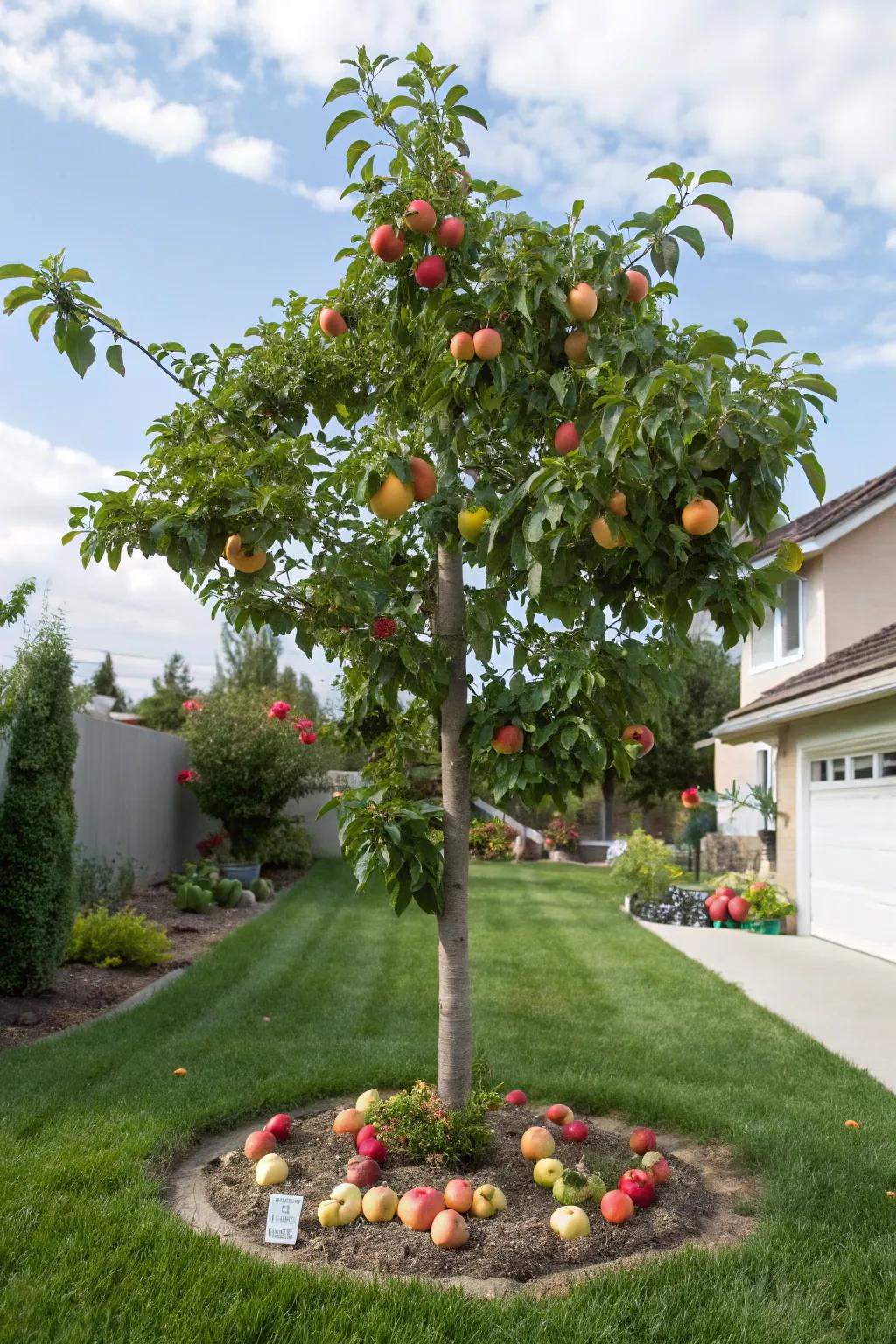
For those who love variety, multi-grafted fruit trees offer different fruits on one tree. It’s a unique and space-saving way to enjoy multiple flavors in your garden.
Some ideas to consider:
- Multi-Grafted Fruit Tree Starter Kit: Transform your garden with this starter kit and enjoy diverse fruits from one tree!
- Fruit Tree Grafting Tool Set: Enhance your grafting skills with this tool set, perfect for creating multi-grafted trees.
- Multi-Grafted Citrus Tree: Experience different citrus flavors on one tree; ideal for small gardens and front yards.
2. Mini Orchard in Your Front Yard
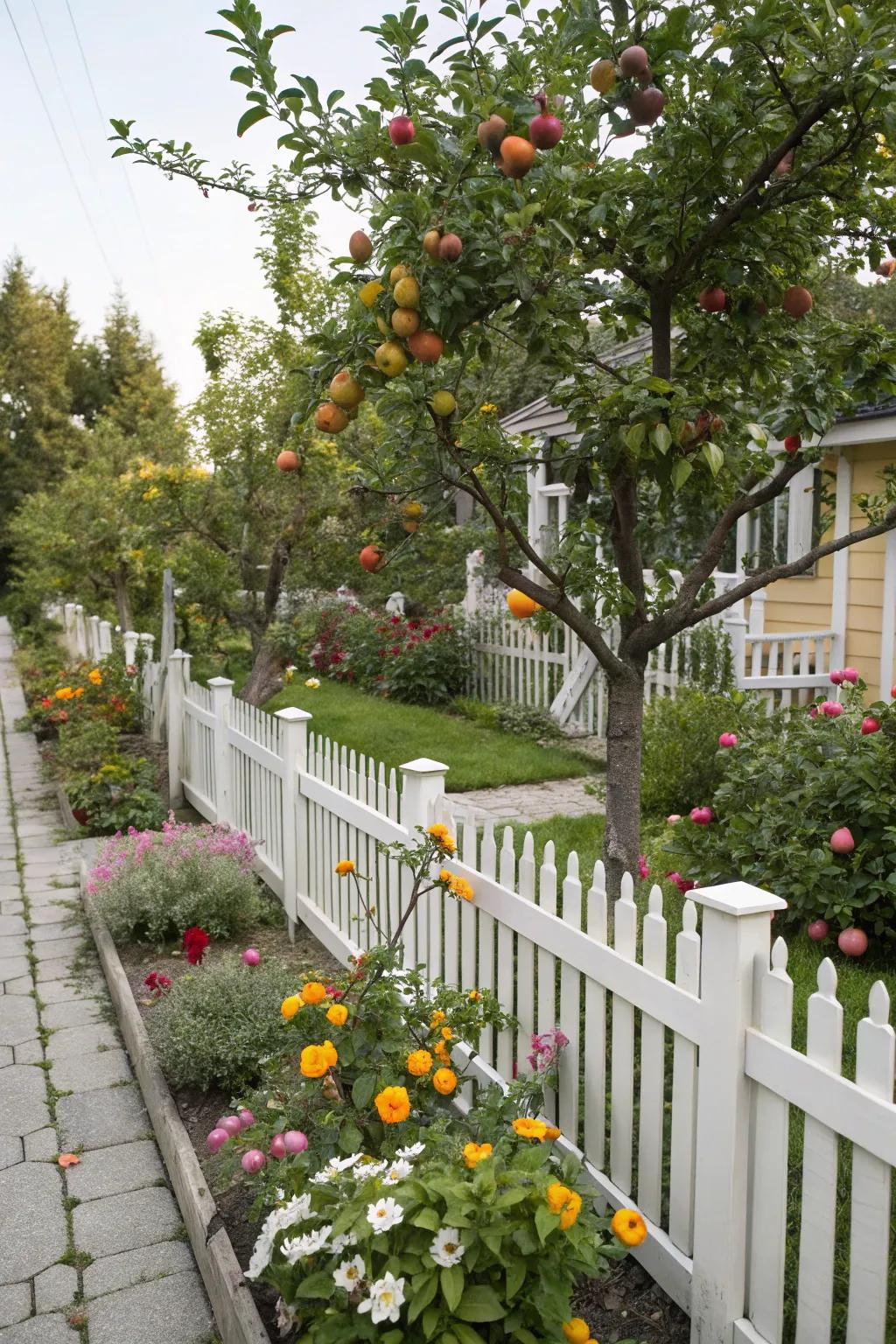
Create a mini orchard in your front yard with a selection of small fruit trees. It’s a delightful way to enjoy a variety of fruits while adding lush greenery to your home.
Some handy options:
- Dwarf Fruit Tree Starter Kit: Grow a variety of small fruit trees in your yard with this easy starter kit.
- Organic Fertilizer for Fruit Trees: Boost your mini orchard’s growth with this organic plant food. Simple and effective care.
- Pruning Shears for Fruit Trees: Maintain your fruit trees easily with these durable, sharp pruning shears. Perfect for home gardeners.
3. Pineapple Guava for Year-Round Greenery
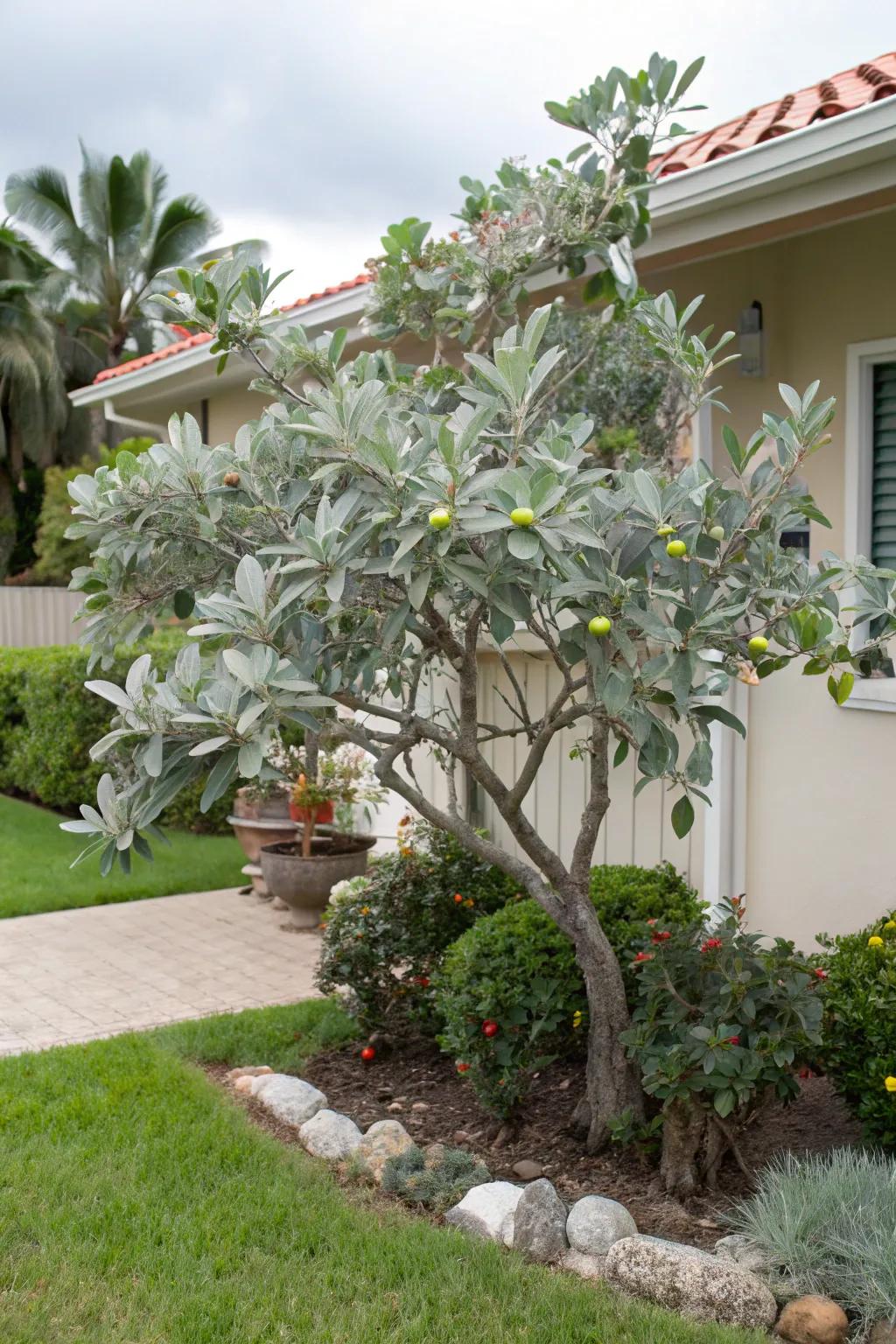
Pineapple guava offers silvery leaves and unique, edible fruit. It’s perfect for adding a touch of evergreen beauty and a bit of tropical flavor to your landscape.
These products might help:
- Pineapple Guava Fertilizer: Boost your tree’s growth and fruit yield with this specially formulated fertilizer for guavas.
- Pruning Shears for Fruit Trees: Maintain your pineapple guava tree’s shape and health with these efficient pruning shears.
- Bird Netting for Fruit Trees: Protect your guava fruit from birds with easy-to-install and durable bird netting.
4. Citrus Trees for Scented Entrances

Citrus trees near your entrance offer fragrant blossoms and vibrant fruits, welcoming you home with a delightful aroma. They’re a lovely addition for both aesthetics and scent.
Possibly handy products:
- Dwarf Citrus Tree: Enhance your entrance with a dwarf citrus tree for fresh aroma and vivid appeal.
- Citrus Tree Planter: Boost elegance with a durable, chic planter, perfect for showcasing your citrus trees.
- Organic Citrus Fertilizer: Nurture healthy growth with organic fertilizer, ensuring lush foliage and fragrant blossoms.
5. Peach Trees for Summer Delights
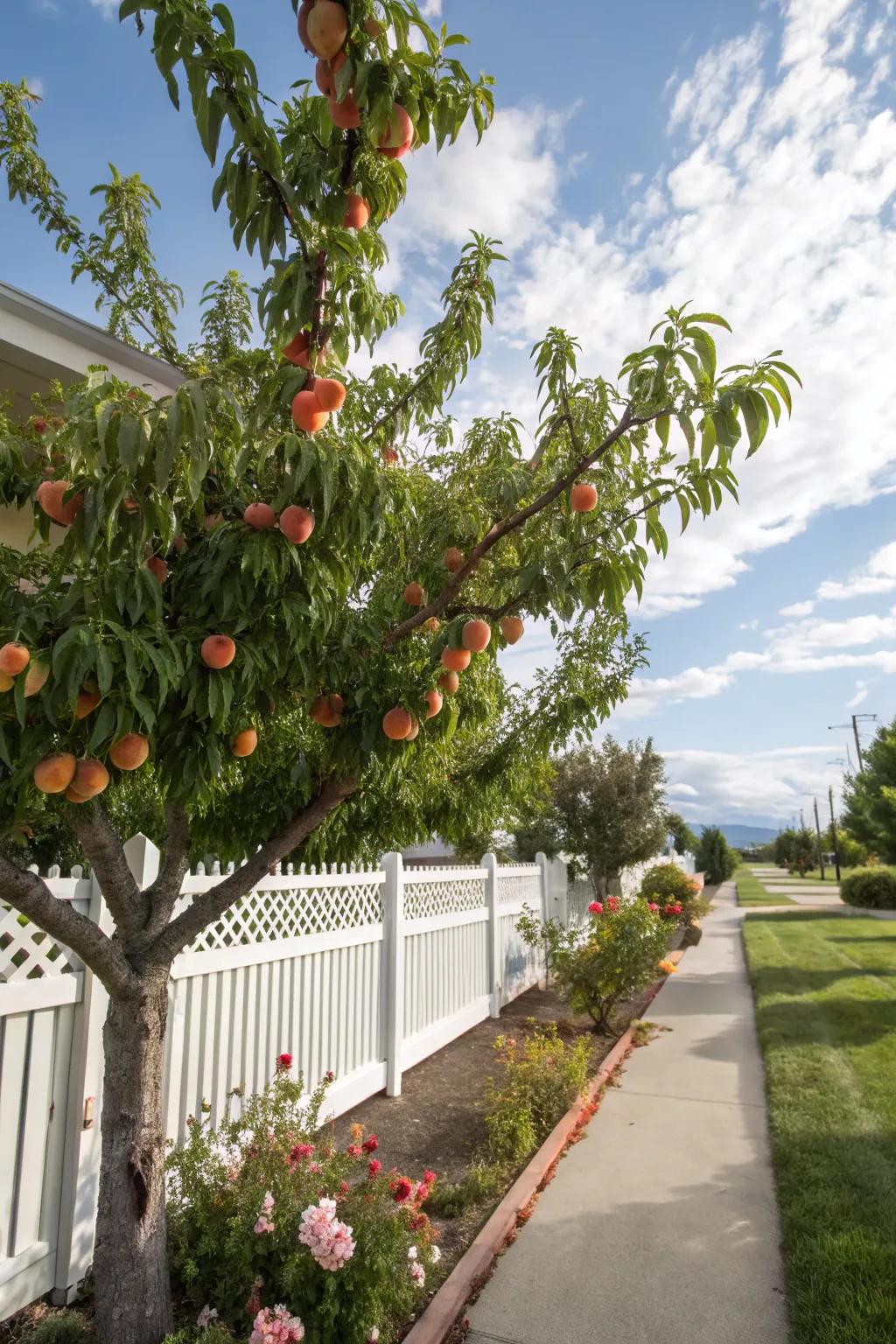
Peach trees are a summer favorite, offering luscious fruits and pretty pink blossoms. They thrive in sunny spots and are perfect for creating a sweet, inviting garden.
Check these products out:
- Organic Peach Tree Fertilizer: Boost your peach tree growth with this nutrient-rich organic fertilizer. Easy to apply!
- Peach Tree Pruning Shears: Enhance fruit production with precise pruning. Durable and perfect for all peach varieties.
- Peach Tree Watering System: Ensure your peach trees receive consistent watering with this efficient irrigation system.
6. Persimmon Trees for Autumn Color
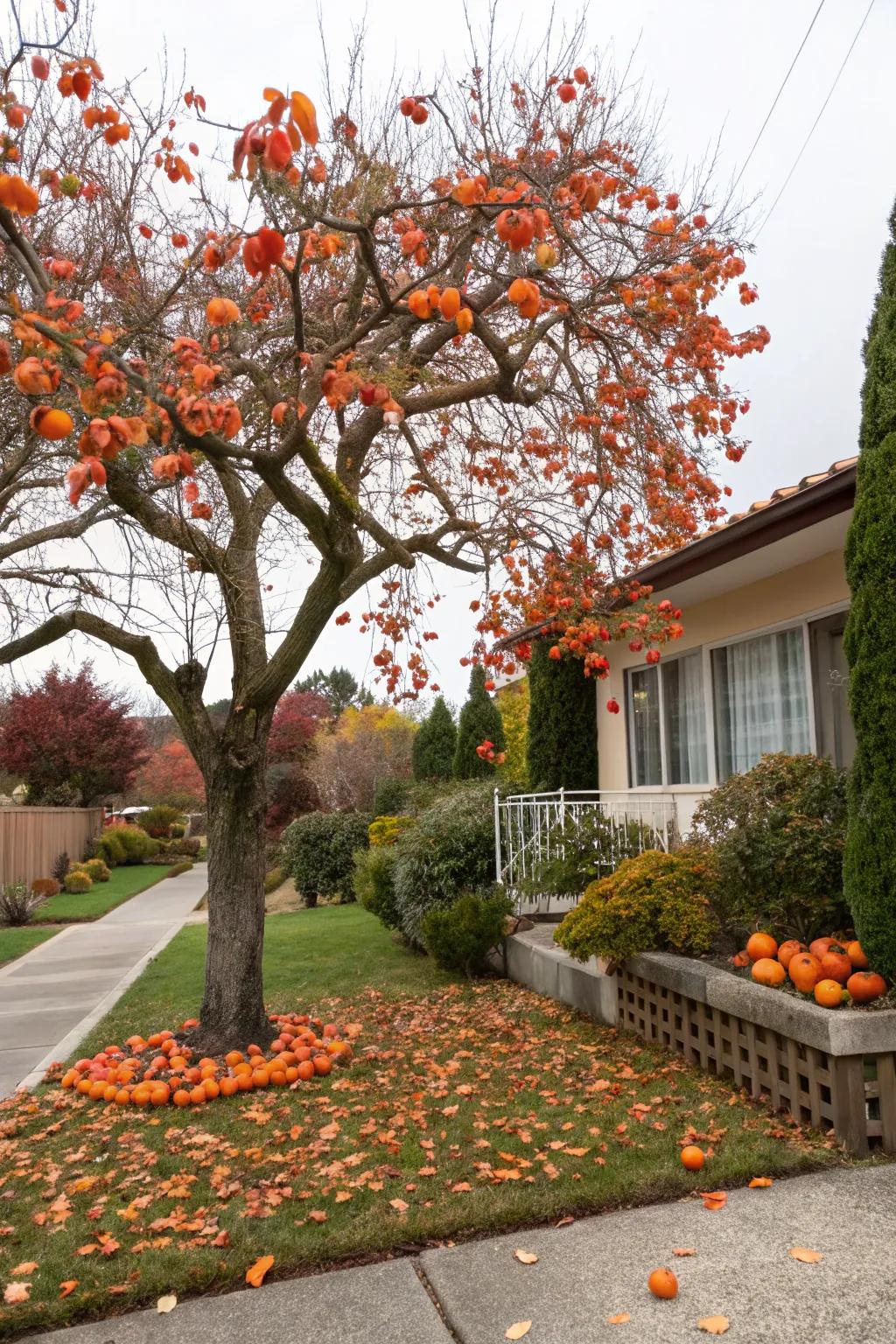
Persimmon trees are a fall favorite with their vibrant orange fruits and colorful foliage. They’re a stunning choice for adding seasonal interest and delicious treats.
Might be a good match:
- Persimmon Tree Fertilizer: Boost your persimmon tree’s health and enhance fruit growth with this nutrient-rich fertilizer.
- Autumn Garden Decor: Add charm to your front yard with beautifully crafted autumn-themed garden decorations.
- Fruit Picker Tool: Easily harvest persimmons from your tree with this convenient and extendable fruit picker tool.
7. Use Pathways with Fruit Trees
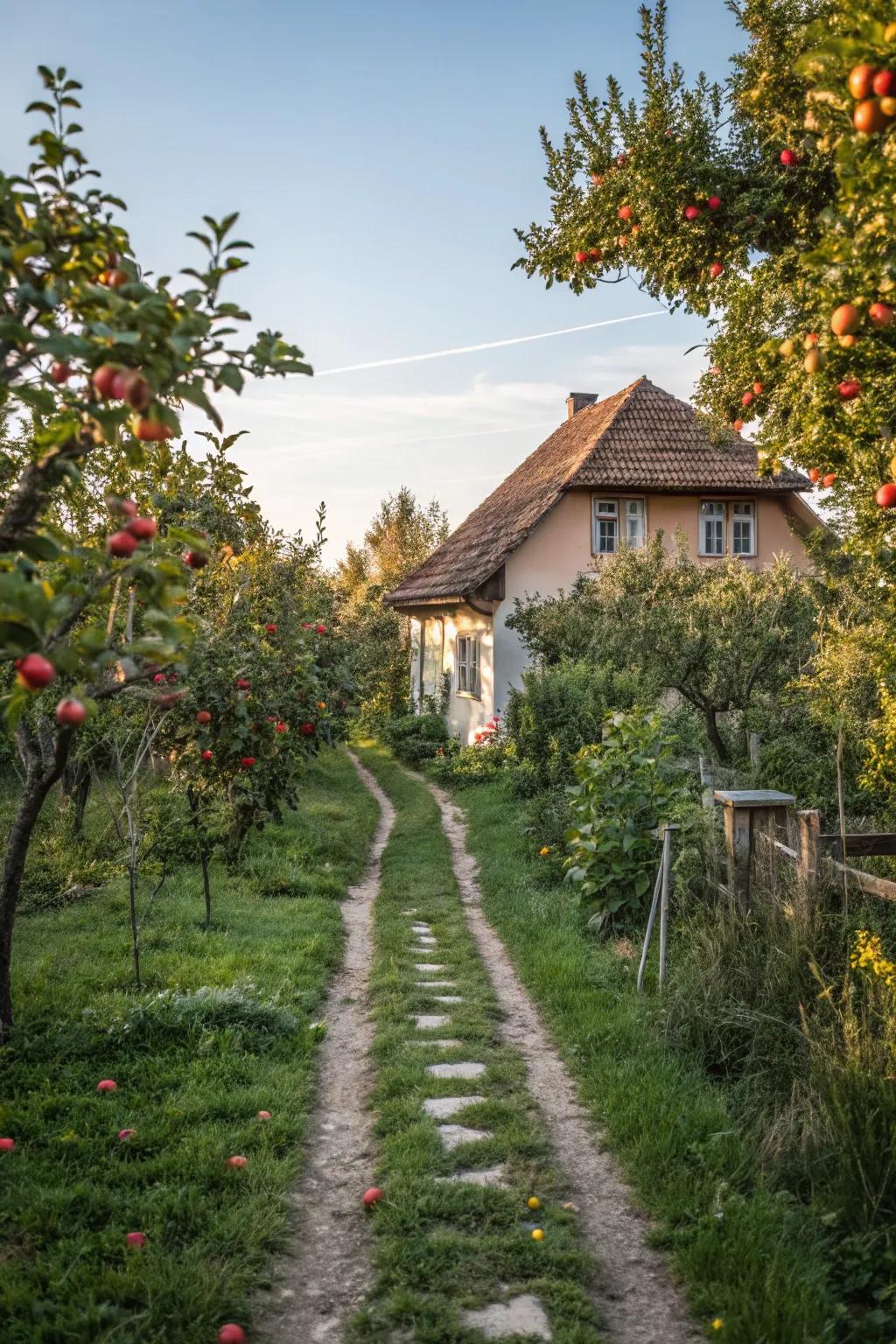
Line your garden pathways with fruit trees for a structured and productive landscape. This approach not only guides visitors but also offers easy access to fresh fruits.
A few suggestions:
- Fruit Tree Starter Kit: Start your fruit garden journey with this comprehensive starter kit for new tree growers.
- Pruning Shears for Fruit Trees: Maintain your fruit trees’ health and shape with these high-quality pruning shears.
- Organic Fertilizer for Fruit Trees: Boost your fruit trees’ growth and yield with this effective organic fertilizer.
8. Vertical Fruit Gardens
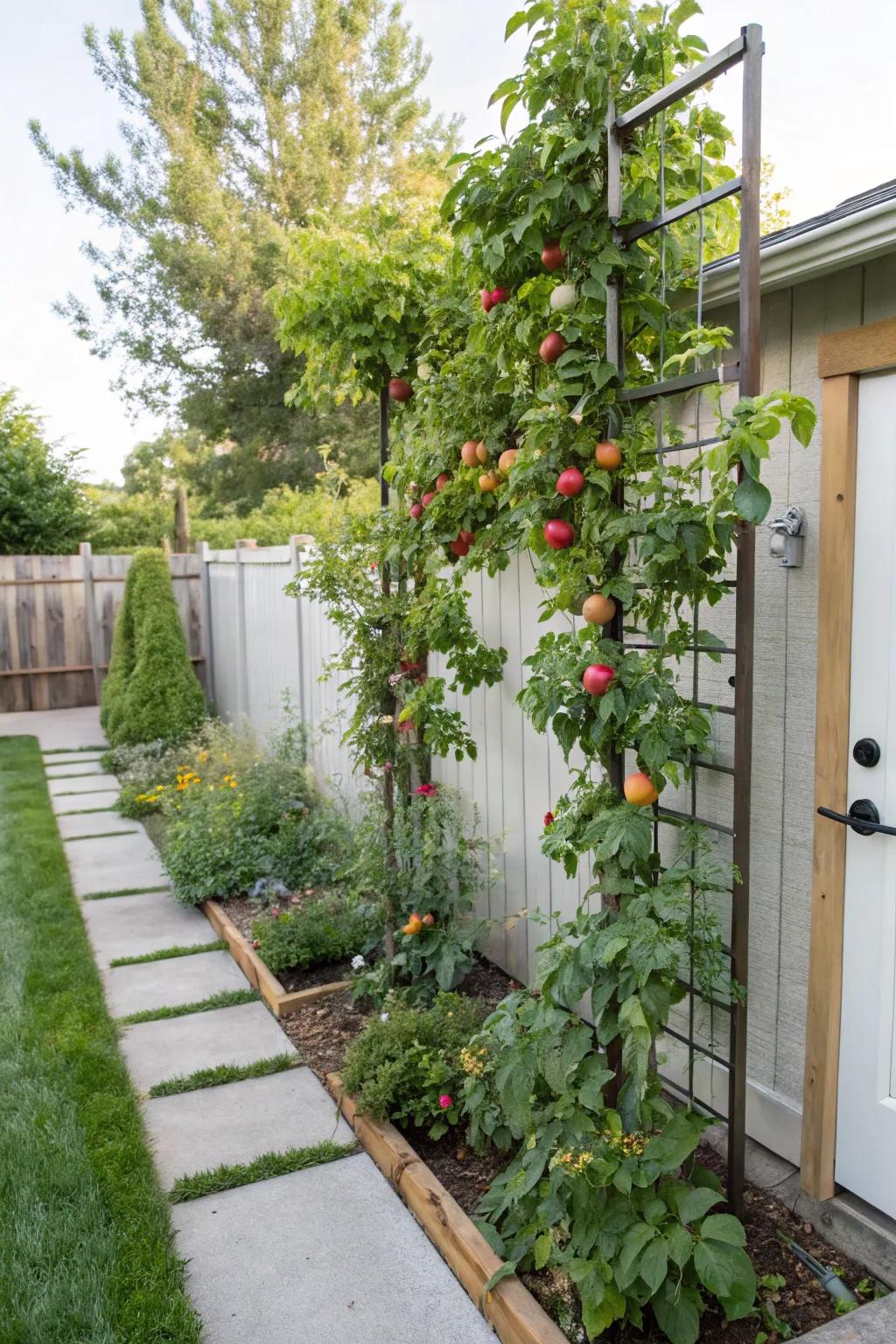
Ideal for small spaces, vertical fruit gardens maximize your growing area. Train vines or dwarf trees upward, saving ground space while still enjoying a bountiful harvest.
May just do the trick:
- Garden Trellis: Elevate your garden with a sturdy trellis, perfect for supporting climbing fruit vines.
- Vertical Planter Wall: Maximize space with a vertical planter wall, ideal for small fruit gardens.
- Self-Watering Planters: Ensure consistent moisture with self-watering planters, keeping your fruit plants healthy and vibrant.
9. Fig Trees for a Mediterranean Vibe
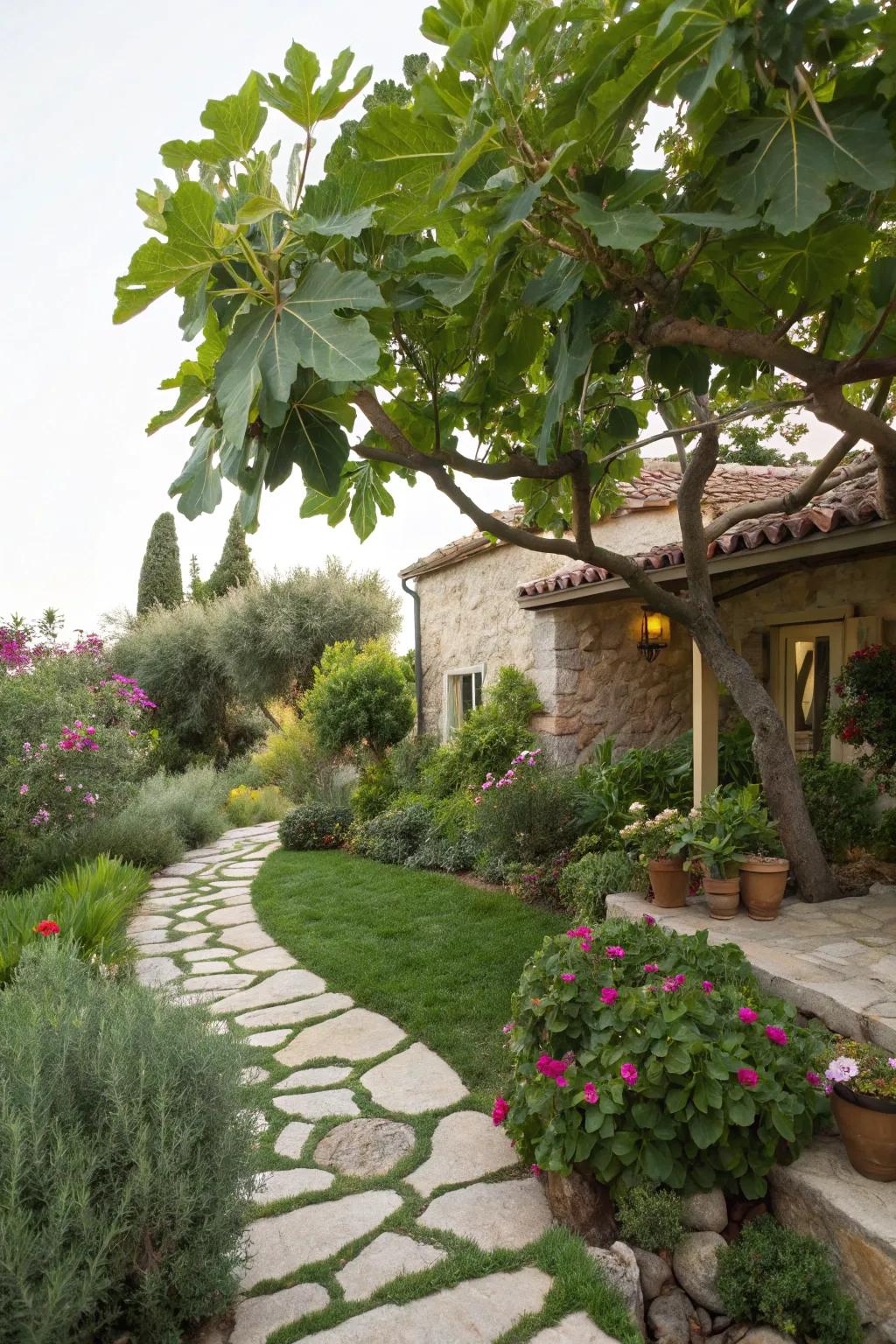
Figs bring a touch of the Mediterranean to your front yard with their broad leaves and tasty fruits. They’re a great choice for adding lush texture and a hint of exotic flair.
Check if these fit your needs:
- Potted Fig Tree for Mediterranean Gardens: Transform your front yard with lush fig trees, perfect for a Mediterranean garden feel.
- Terracotta Planter for Fig Trees: Enhance your fig tree’s look with a rustic terracotta planter, adding charm to your yard.
- Organic Fig Tree Fertilizer: Boost your fig tree’s growth with this organic fertilizer, ensuring healthy and lush foliage.
10. Banana Trees for Exotic Flair
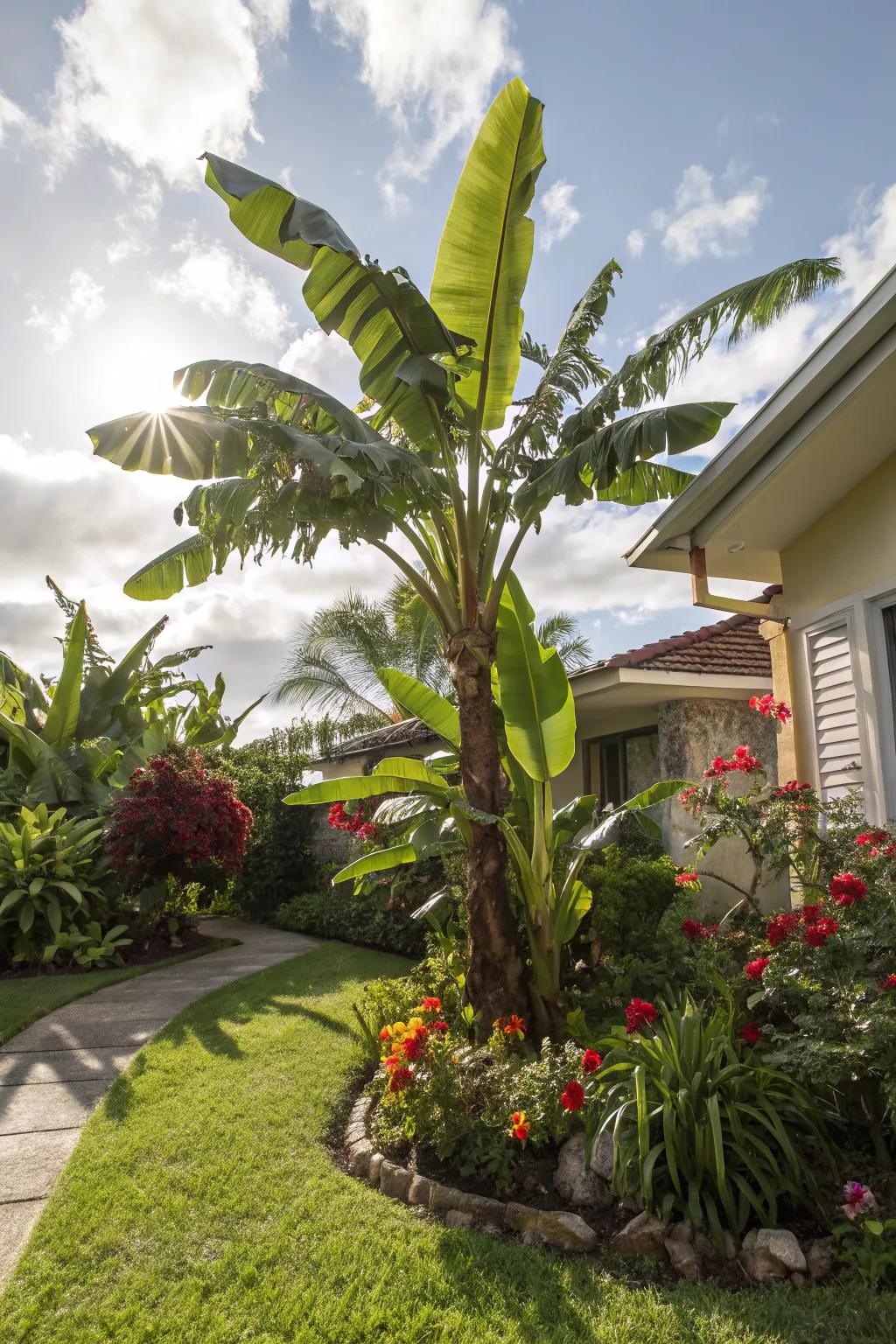
Dwarf banana trees bring an exotic flair to your garden with their lush leaves and tropical appeal. They’re perfect for adding a vacation vibe to your front yard.
Possibly helpful picks:
- Dwarf Banana Tree Starter Kit: Kickstart your tropical garden with this easy-to-plant dwarf banana tree starter kit.
- Tropical Plant Fertilizer: Nourish your banana trees with specialized fertilizer for lush, vibrant growth in any climate.
- Garden Landscape Lighting: Enhance your garden’s exotic allure with landscape lighting to highlight banana trees at night.
11. Dwarf Apple Trees

Dwarf apple trees are perfect for small spaces and bring a charming touch to your front yard. With their lovely spring blossoms and delicious fruits, these trees offer both beauty and bounty.
A few helpful options:
- Organic Fruit Tree Fertilizer: Boost your dwarf apple trees’ growth naturally with this eco-friendly, organic fertilizer blend.
- Apple Tree Pruning Shears: Ensure healthy growth with these precise pruning shears, perfect for maintaining your dwarf apple trees.
- Decorative Tree Mulch Rings: Enhance your front yard’s aesthetics while protecting soil with these stylish mulch rings.
12. Container Citrus Trees
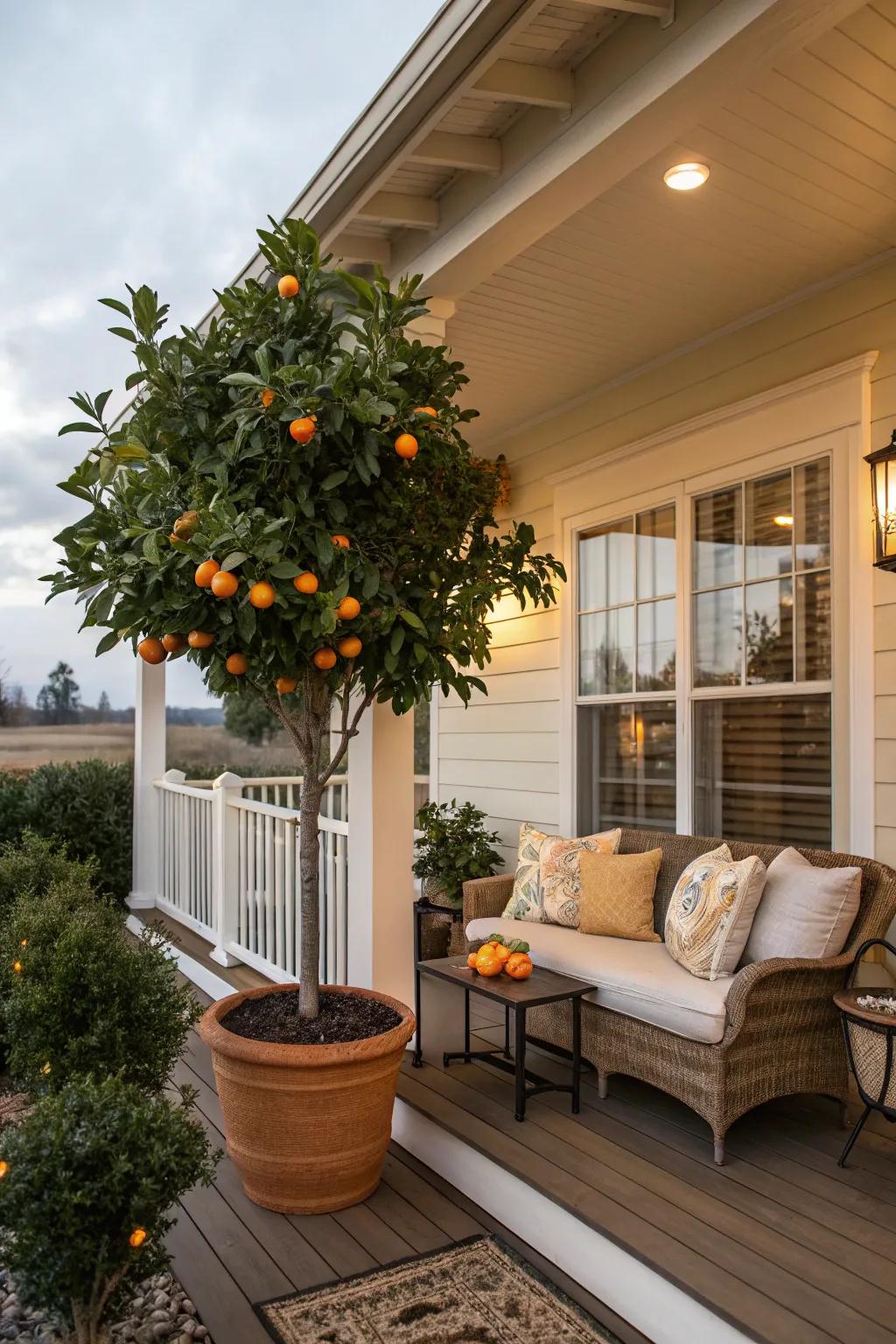
Perfect for patios and porches, container citrus trees offer fragrant blossoms and juicy fruits. They’re easy to move around, making them ideal for flexible gardening.
Useful items to consider:
- Large Outdoor Planters: Enhance your porch with durable planters, perfect for showcasing vibrant citrus trees.
- Organic Citrus Fertilizer: Nourish your citrus trees with organic fertilizer for optimal growth and fruit production.
- Adjustable Plant Stand: Elevate your citrus trees with an adjustable stand that complements any patio decor.
13. Espaliered Fruit Trees
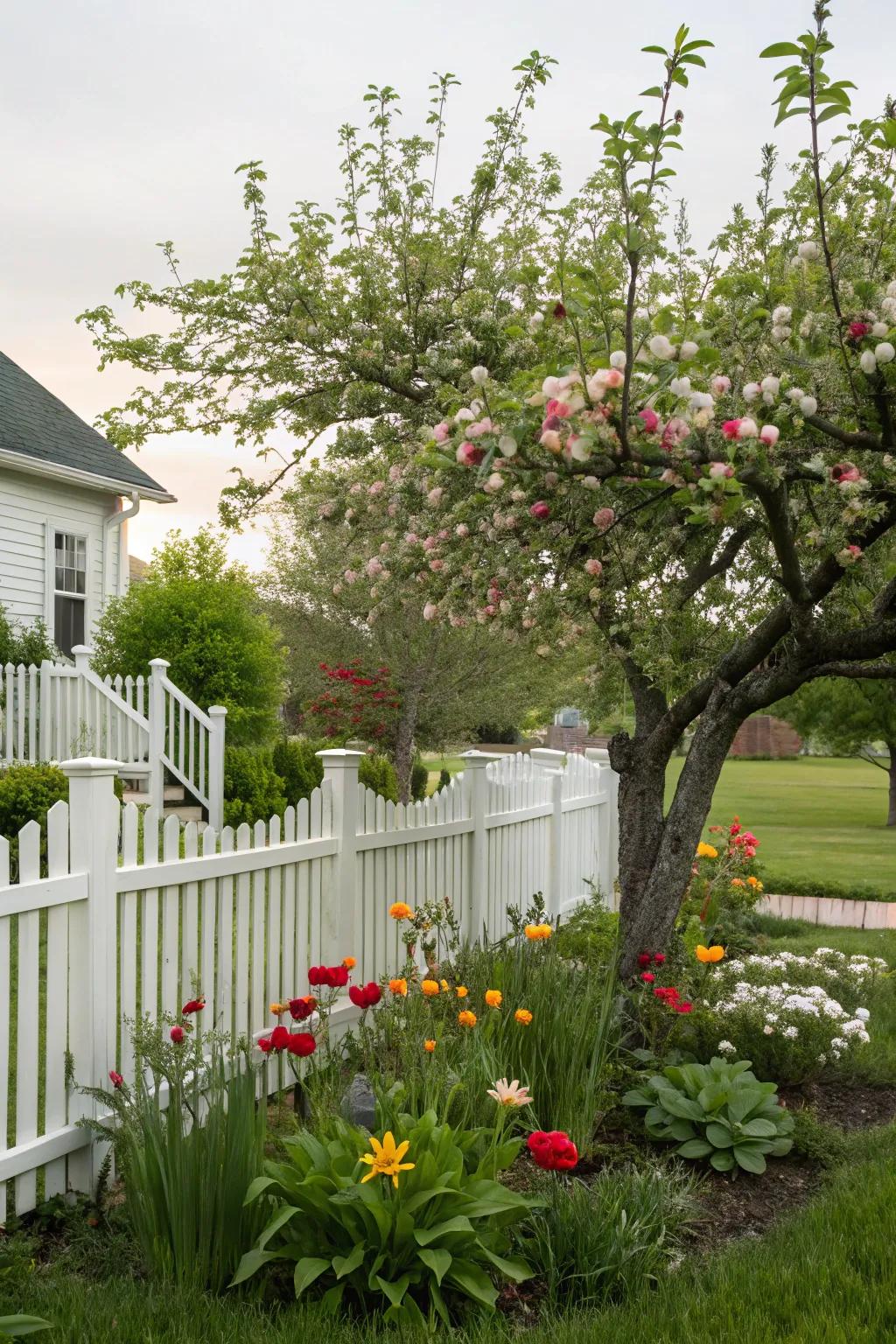
Espaliered fruit trees are a stylish way to grow fruit in limited spaces. They can be trained against walls or fences, creating a living piece of art with delicious rewards.
Give these a look:
- Espalier Training Trellis System: Enhance your garden with a trellis system, perfect for training espaliered fruit trees beautifully.
- Pruning Shears for Fruit Trees: Maintain the perfect shape of your espaliered trees using durable pruning shears efficiently.
- Organic Fertilizer for Fruit Trees: Boost the health of your espaliered trees with nutrient-rich organic fertilizer, promoting growth.
14. Olive Trees for Mediterranean Charm
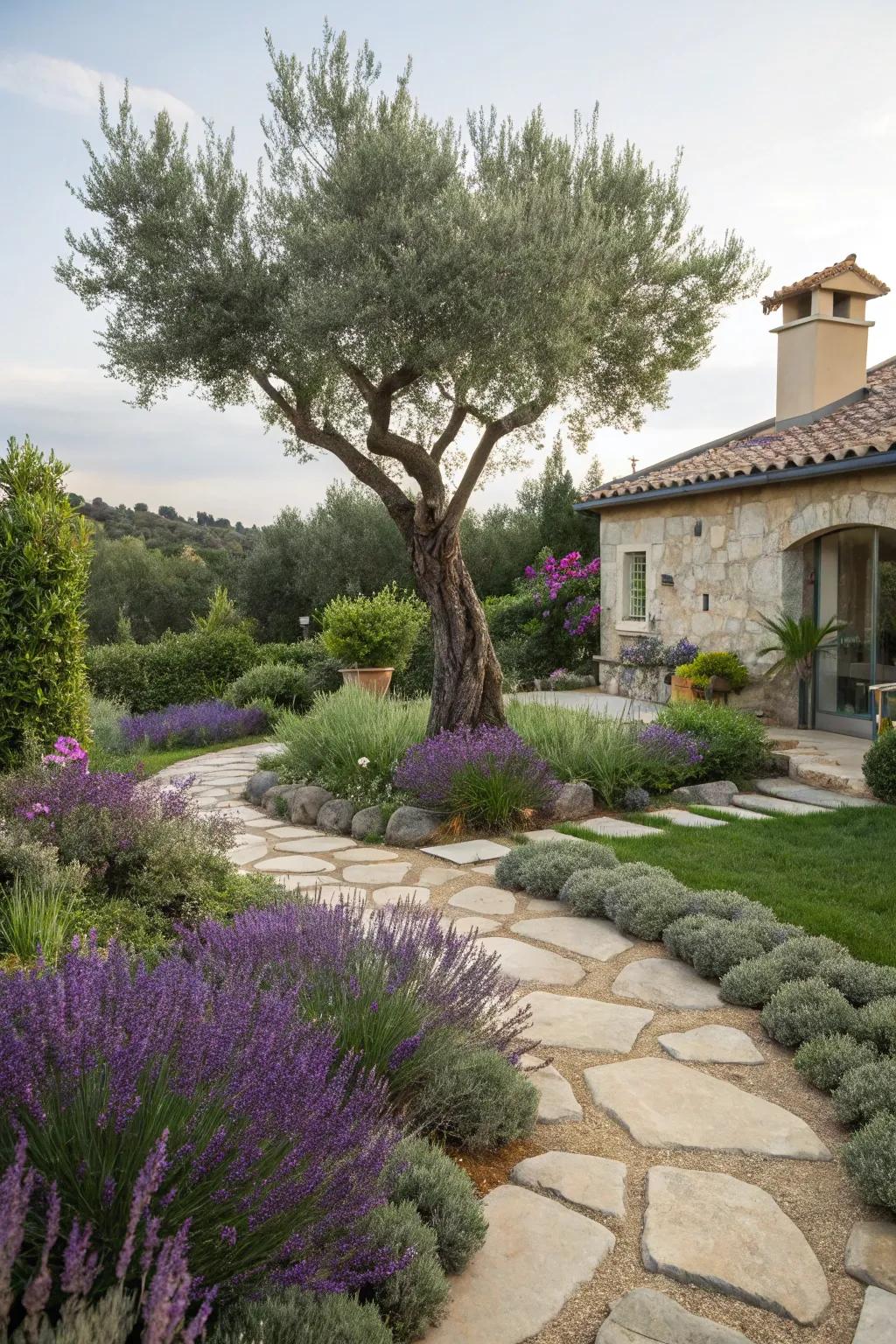
Olive trees provide classic Mediterranean charm with their slender leaves and elegant form. They’re perfect for adding a timeless touch to your front yard.
Items that may come in handy:
- Live Olive Tree Plant: Enhance your front yard with a live olive tree for a timeless Mediterranean aesthetic.
- Stylish Terracotta Planter: Showcase your olive tree in style with a classic terracotta planter.
- Mediterranean Garden Soil Mix: Boost olive tree health with a soil mix designed for Mediterranean plants.
15. Cherry Trees for Spring Blossoms
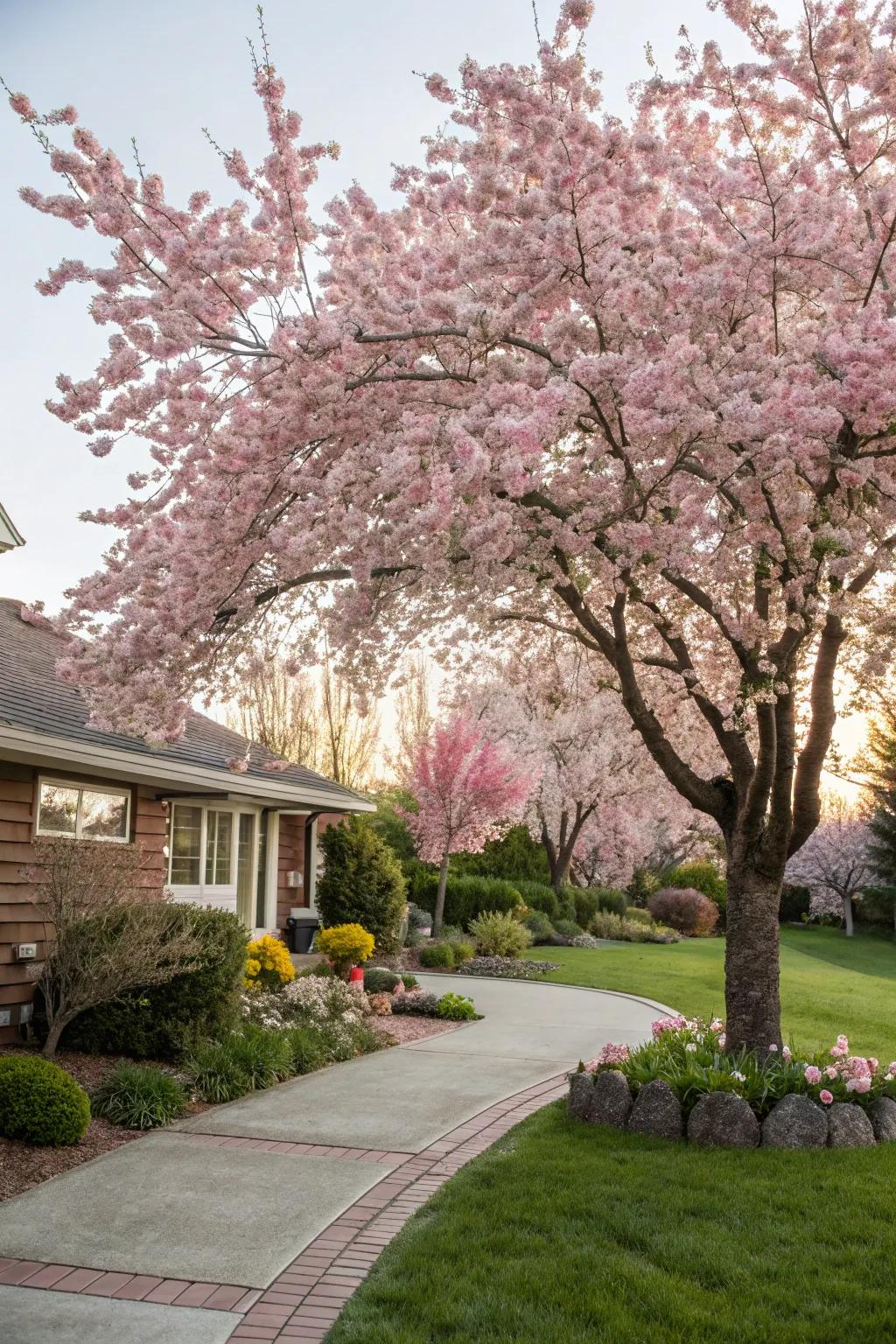
Cherry trees are a springtime showstopper with their delicate pink and white blossoms. Even better, they offer sweet cherries that are perfect for summer snacking.
Maybe worth checking out:
- Cherry Tree Seedlings: Plant cherry tree seedlings in your yard and enjoy beautiful blossoms each spring.
- Organic Cherry Tree Fertilizer: Boost your cherry tree growth and blossom quality with organic tree fertilizer.
- Cherry Blossom Essential Oil: Experience the scent of cherry blossoms with this relaxing essential oil, perfect for aromatherapy.
16. Pear Trees for Seasonal Delights
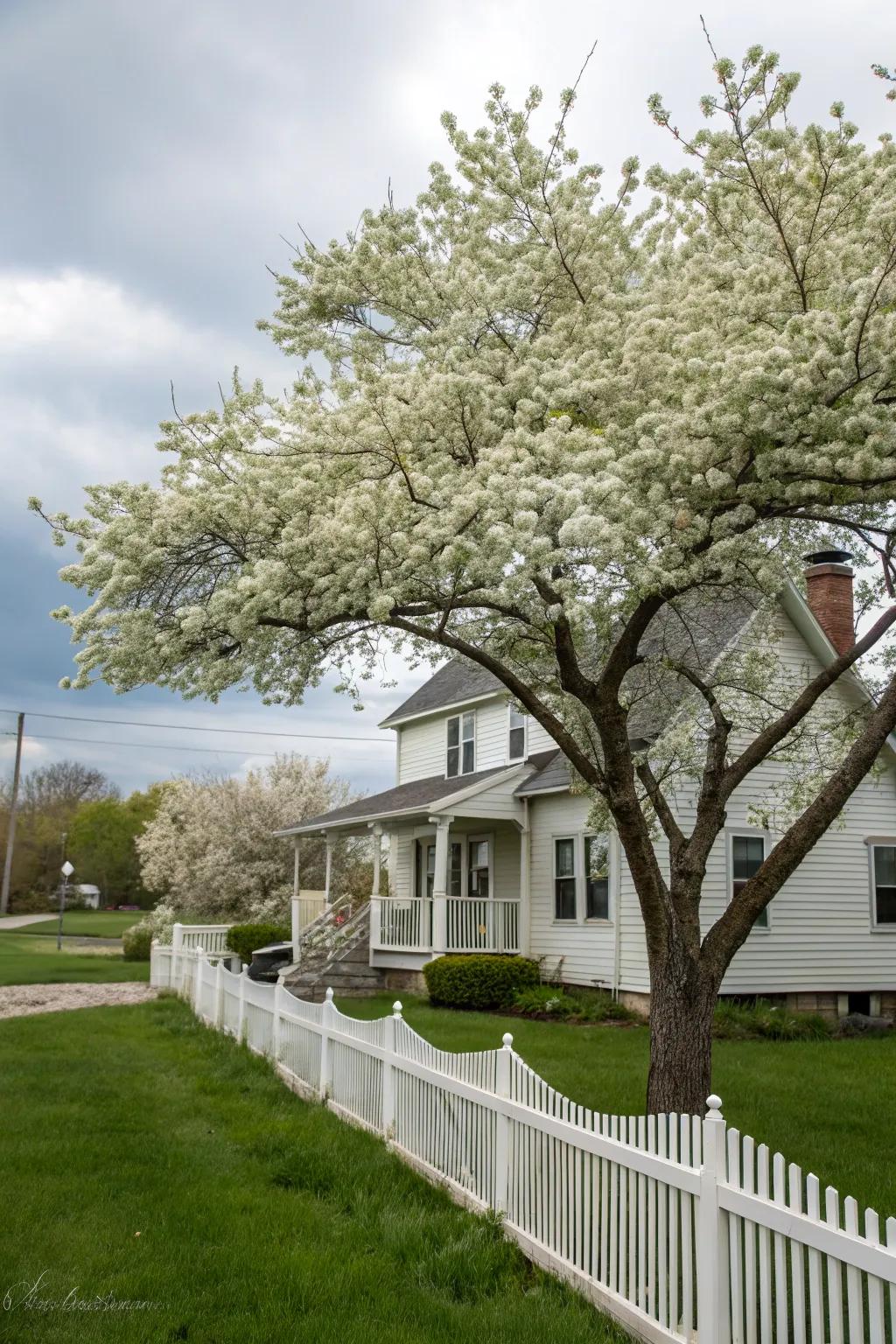
Pear trees offer lovely spring blossoms and juicy fruits in the fall. They’re a delightful way to enjoy seasonal changes and fresh produce in your front yard.
Explore these options:
- Pear Tree Fertilizer: Enhance your pear harvest with this specialized fertilizer for vibrant growth and juicy fruits.
- Fruit Tree Pruning Shears: Keep your pear trees healthy and productive with these durable pruning shears for easy trimming.
- Organic Fruit Tree Spray: Protect your pear trees naturally with this eco-friendly spray for pest and disease control.
17. Ornamental Crabapple Trees
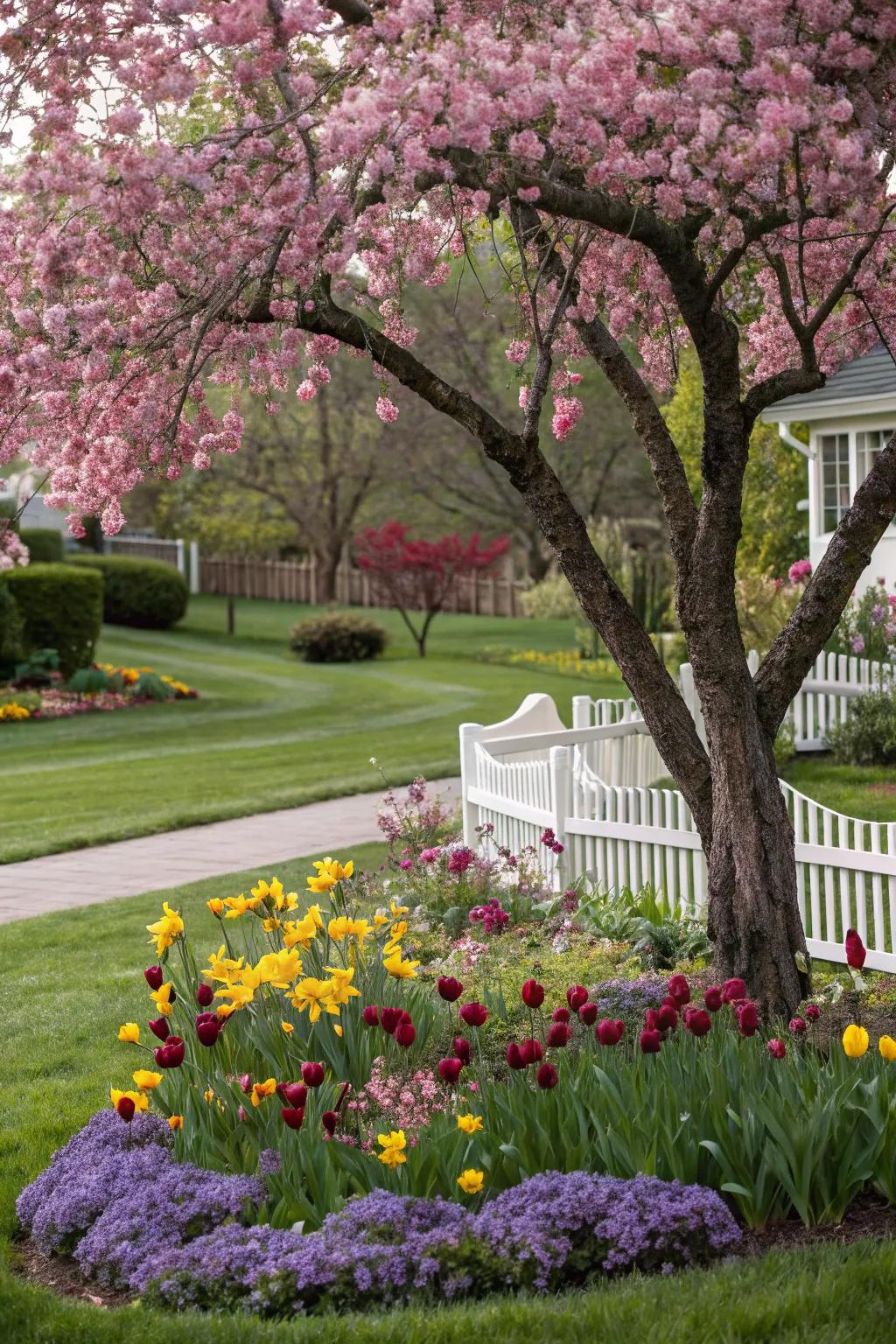
Crabapple trees offer ornamental beauty with their colorful blooms and small, edible fruits. They’re a wonderful choice for adding seasonal interest to your front yard.
Try these:
- Crabapple Tree Seeds: Start your own ornamental crabapple tree with these easy-to-grow seeds. Transform your yard today!
- Organic Fertilizer for Fruit Trees: Enhance your crabapple tree’s growth with this nutrient-rich, organic fertilizer. Promote stunning blooms!
- Garden Pruning Shears: Keep your crabapple tree in shape with these high-quality pruning shears. Perfect for shaping branches.
18. Plum Trees for Springtime Beauty
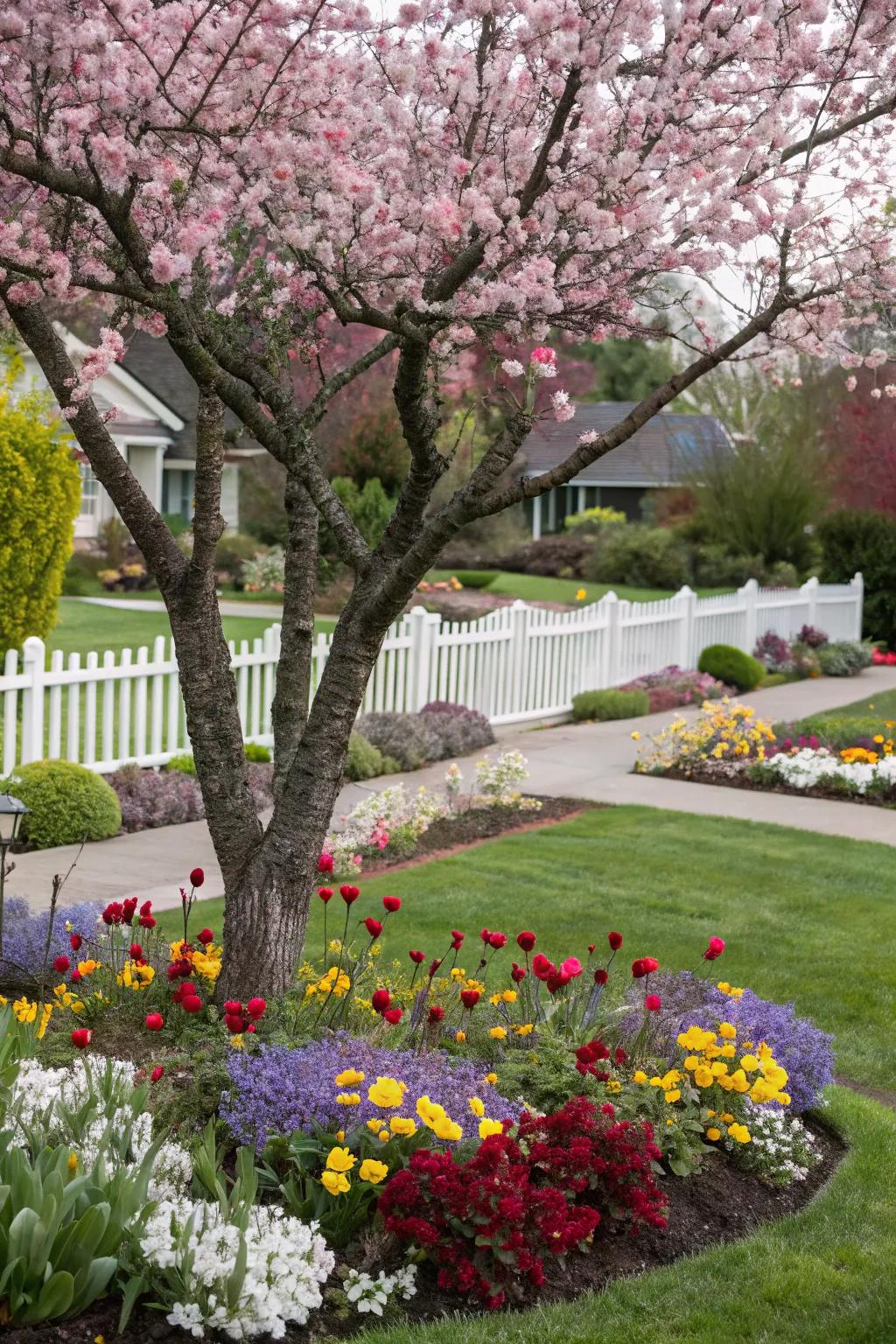
Plum trees are a spring delight with their vibrant blooms and juicy fruits. They’re perfect for adding color and flavor to your front yard garden.
You might give these a try:
- Organic Plum Tree Fertilizer: Enhance your plum tree’s growth with this organic fertilizer, perfect for vibrant blooms.
- Decorative Mulch for Fruit Trees: Retain moisture and add style to your yard with this decorative mulch.
- Plum Tree Pruning Shears: Keep your plum tree healthy with these high-quality pruning shears for precise cuts.
19. Blueberry Bushes as Edible Hedges
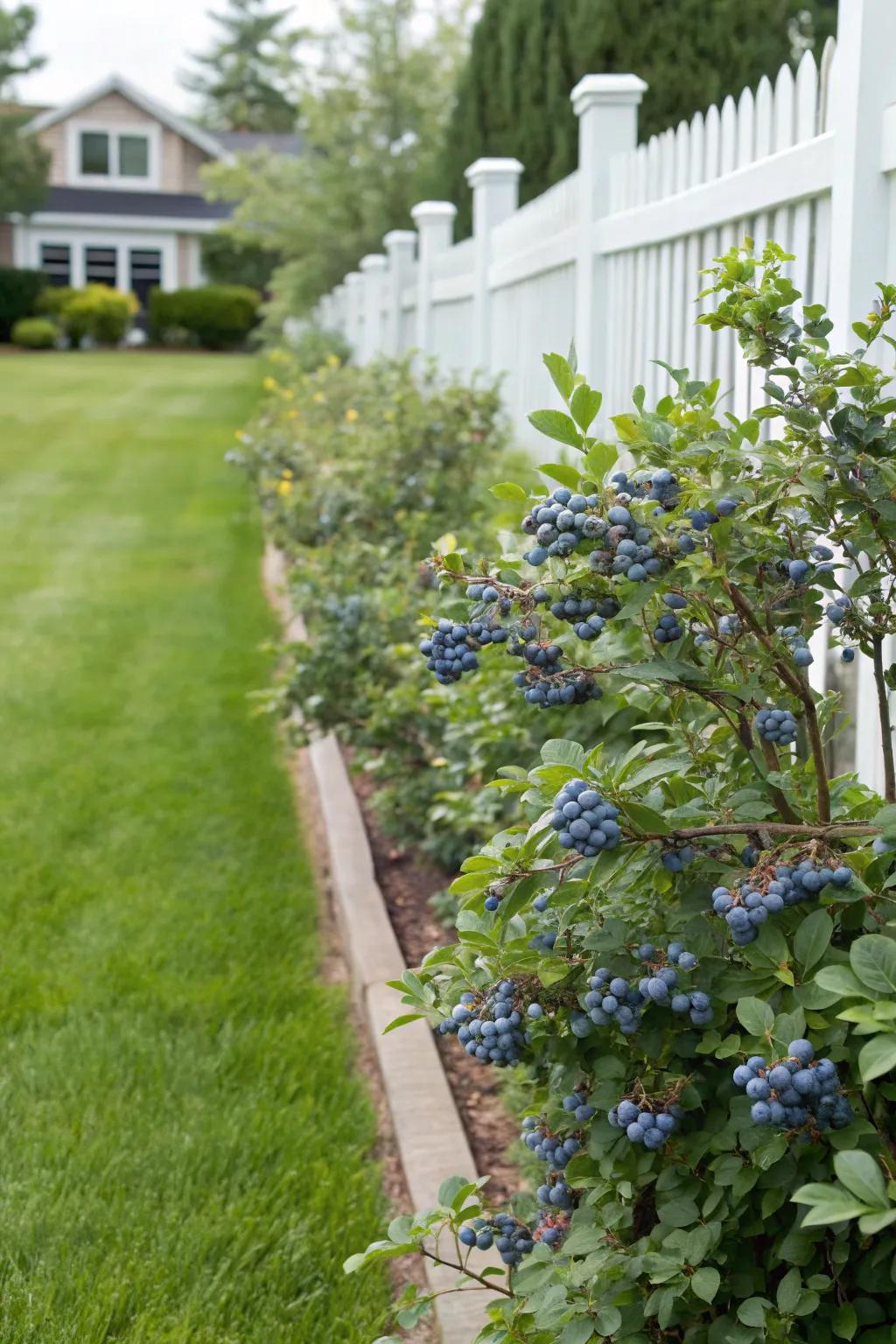
Blueberry bushes make excellent edible hedges, providing privacy and tasty berries. They thrive in various light conditions and add a lovely touch of greenery.
A few things you might like:
- Blueberry Bush Starter Plants: Transform your yard with easy-to-grow blueberry bushes for privacy and delicious berries.
- Organic Berry Fertilizer: Boost your blueberry plants’ growth with this organic fertilizer for fruitful, lush hedges.
- Pruning Shears for Fruit Trees: Keep your blueberry hedges neat and productive with reliable pruning shears.
